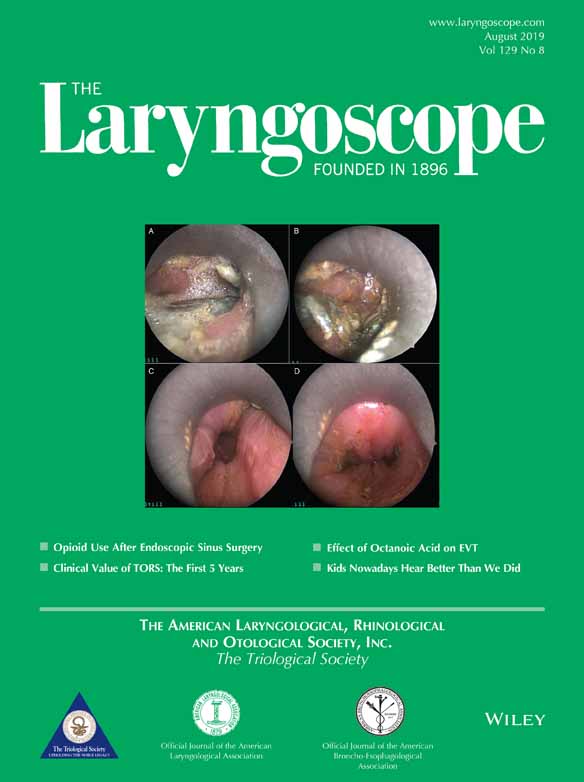Diagnostic accuracy and confidence for otoscopy: Are medical students receiving sufficient training?
The collection of otoscopic images used in this study was funded by The Ohio State University College of Medicine Office of Research Bridge Funding Program.
The authors have no other funding, financial relationships, or conflicts of interest to disclose.
Abstract
Objectives/Hypothesis
To assess the confidence and abilities of medical students to diagnose specific types of otologic pathology, and to determine how different training experiences in medical school impact these outcomes.
Study Design
Survey analysis.
Methods
Sixty third- and fourth-year medical students completed a computerized online survey. Participants answered questions about their otoscopic training experience and confidence, and provided diagnoses for 72 digital images taken with a high-definition video otoscope that showed common otologic pathologies of the tympanic membrane and middle ear space.
Results
Most participants (65%) had received less exposure to otoscopic training in medical school than they expected. Confidence in diagnostic ability was low. For diagnostic ability, the mean percent correct across pathologies was 54% ± 7.7%. Medical school year (P = .006), intended specialty (P = .022), and total number of otolaryngology rotations (P = .048) were predictive of diagnostic accuracy on univariable logistic regression analyses, but medical school year (P = .039) was the only significant independent predictor in multivariable analysis. Intended specialty (P = .047) and total number of otolaryngology rotations (P = .035) were predictive of prequiz diagnostic confidence on univariable logistic regression analyses.
Conclusions
Medical students were not satisfied with their exposure to otoscopic training. Intended specialty, total number of otolaryngology rotations, and year in medical school predicted diagnostic accuracy. Intended specialty and total number of otolaryngology rotations predicted diagnostic confidence. Additional studies are needed to investigate how training experiences can be improved to optimize otoscopy training during medical school.
Level of Evidence
NA
Laryngoscope, 129:1891–1897, 2019




